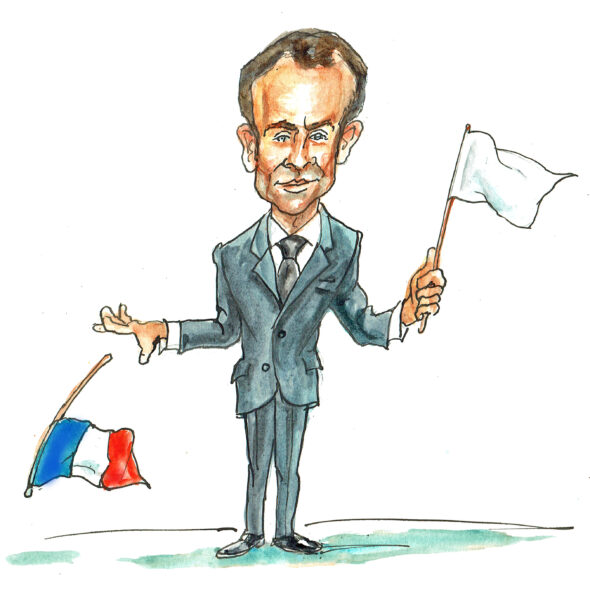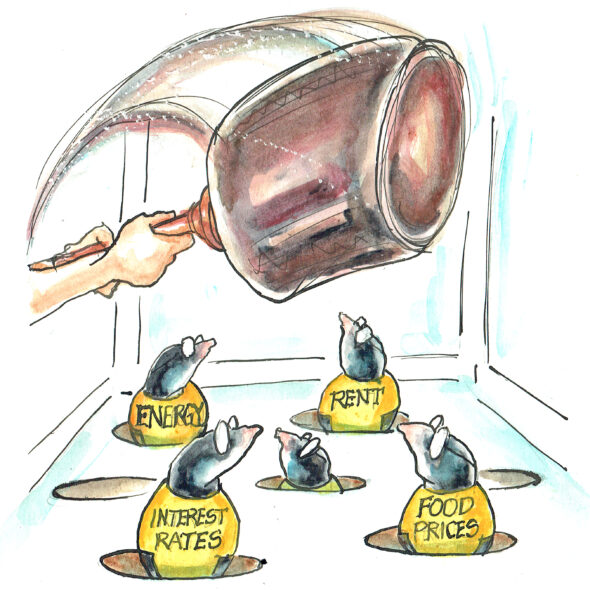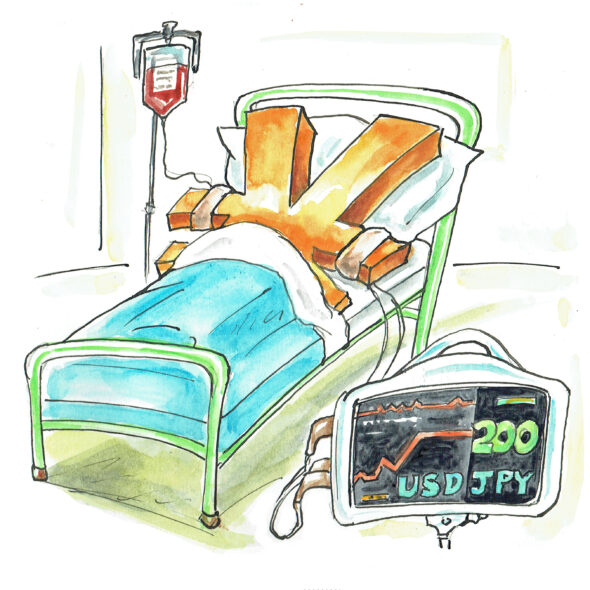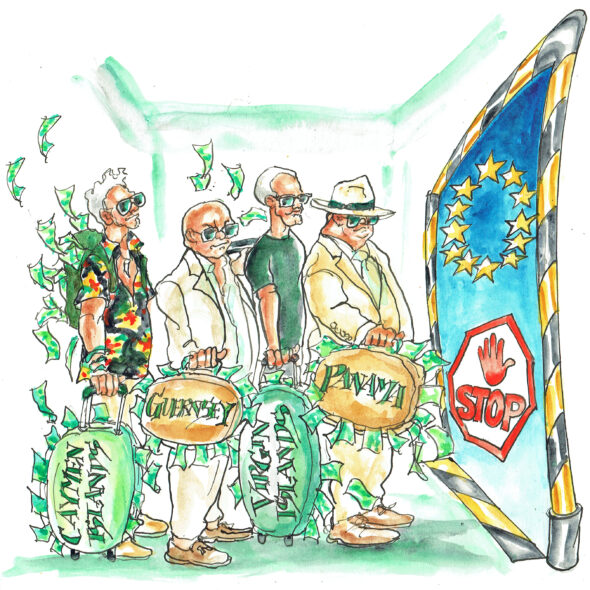Saxo, the online trading and investment specialist, has today released its 10 Outrageous Predictions for 2023. The predictions focus on a series of unlikely but underappreciated events which, if they were to occur, would send shockwaves across the financial markets as well as political and popular cultures.
These predictions are a thought experiment in considering the full extent of what is possible – even if not necessarily probable – and, occasionally, they come true. Saxo recently released its list of correct Outrageous Predictions, which included the UK’s exit from the European Union.
While these predictions do not constitute Saxo’s baseline forecasts for what will happen in 2023, all large market moves are brought about by something outrageous because a big market move requires a big surprise. In a world where central banks and governments are set to lose their battle with inflation, the risk is that markets will prove as outrageous as ever in 2023 and beyond.
Commenting on this year’s Outrageous Predictions, Chief Investment Officer at Saxo, Steen Jakobsen said: “This year’s Outrageous Predictions argue that any belief in a return to the disinflationary pre-pandemic dynamic is impossible because we have entered into a global war economy, with every major power across the world now scrambling to shore up their national security on all fronts; whether in an actual military sense, or due to profound supply-chain, energy and even financial insecurities that have been laid bare by the pandemic experience and Russia’s invasion of Ukraine.”
The World at War
The Outrageous Predictions for this year are inspired by the similarities between Europe today and the state of the continent in the early twentieth century. In 1910, Norman Angell wrote The Great Illusion, making the argument that there was no way Europe could become embroiled in a serious war again because mutually beneficial trade had ballooned to enormous proportions in the preceding decades of prosperous peace. Within ten years, Europe lay in ruins after a horrible war of attrition on stagnant fronts.
Fast forward to 2022 and the situation rhymes, as many were shocked to their core by the Russian invasion of Ukraine. Few could understand why Russia’s leader Putin would risk war casualties and consign his country to economic hardship after two decades of booming and highly profitable export-driven trade, mostly in extractive commodities industries – chiefly with Western Europe and the rest of the world.
The Ukrainian invasion has brought a war economy mentality to Europe on a scale not seen since 1945. And it’s not just about the woefully inadequate military capabilities in Western Europe, but also about an industrial, Germany-centred model that has been rendered existentially challenged by Europe cutting itself off from cheap and plentiful Russian oil and gas.
Three of the Outrageous Predictions for 2023 look at how Europe may respond to this predicament, one prediction eyeing the creation of an EU Armed Forces and another one spotting the political dysfunction taking shape in France and possibly accelerating us toward the next existential crisis for the EU. Finally, the UK could find itself suddenly far too small to pretend it can remain an independent actor in an abruptly much bigger world, as Saxo outrageously predicts that an ‘UnBrexit’ referendum is held next year.
Saxo predicts that these war economies will be pursued by global powers. The US and China are settling into a war economy mentality as their escalating trade and technology rivalry continues. Satellite countries may find themselves hard pressed to stay unaligned in a ‘trade cold war’. From the response to Russia’s invasion to Ukraine, it is clear that any country without a long-standing military alliance with the US will find it unacceptable to remain vulnerable to the weaponisation of the global USD system. So, Saxo predicts that these powers hold a conference and agree a new reserve currency to avoid the USD system entirely.
If Saxo’s thesis of the war economy proves correct in 2023, then persistent inflation is expected. If inflation is even modestly more than half of the peak 2022 rate by late next year, outrageous outcomes are nearly a guarantee.
In 2023, investors could risk over-estimating the likely recession’s positive impact on inflation. With or without a housing and credit recession, a nation’s almost inexhaustible need to invest in the new priorities of the war economy will ensure a tilt toward more inflation risks. From securing long-term energy supplies to reshoring production to build local supply chains for vital goods and expanding military capabilities, any slowdown in demand from the private sector will be compensated, and then some, by public sector spending.
And while central banks claim they are attempting to fight inflation, they don’t really want ‘too much success’ in doing so. That’s because in the long run, a heavily indebted sovereign will almost always reach for the slow bleeding default of inflation rather than austerity or outright defaults.
The Outrageous Predictions 2023 publication is available here with headline summaries below:
1. Billionaire coalition creates trillion-dollar Manhattan Project for energy

In 2023, owners of major technology companies and other technophile billionaires will grow impatient with the lack of progress in developing the necessary energy infrastructure that would allow them to both pursue their dreams as well as address the needed energy transition. Teaming up, they create a consortium code-named Third Stone, with the goal of raising over a trillion dollars to invest in energy solutions.
It will become the largest research and development effort since the original Manhattan Project that developed the first atomic bomb. In addition to pure research and development efforts aimed at realising the potential of current and ground-breaking new technologies, the fund will focus extensively on integration as well, or how to combine new generation sources with the power transmission and energy storage infrastructure that delivers baseload, the Achilles’ heel of current alternative energy solutions.
Market impact: the companies that partner with the Third Stone consortium and can help realise its vision soar in value in an otherwise weak investment environment.
2. French President Macron resigns

The June 2022 legislative elections saw President Emmanuel Macron’s party and his allies lose their outright majority in Parliament. Confronted with a strong opposition from the left-wing alliance NUPES and Marine Le Pen’s far-right National Rally, the government has no other choice but to pass major laws and the 2023 budget by a fast-track decree – triggering the constitution’s Article 49.3. Nevertheless, bypassing lawmakers cannot be a way to govern in a democracy. He therefore understands that he will be a lame duck for the next four years and he will not be able to pass his signature pension reform. Following the example of Charles de Gaulle in 1946 and 1969, Macron unexpectedly decides to resign in early 2023.
Macron’s resignation opens the door of the Élysée Palace to the far-right contestant Le Pen, thus causing a wave of stupefaction throughout France and beyond, and setting up the latest existential challenge to the EU project and its shaky institutional foundations.
3. Gold rockets to USD 3,000 as central banks fail on inflation mandate

In 2023, gold finally finds its footing after a challenging 2022, in which many investors were left frustrated by its inability to rally even as inflation surged to a 40-year high. 2023 is the year that the market finally discovers that inflation is set to remain ablaze for the foreseeable future. Fed policy tightening and quantitative tightening drives a new snag in US treasury markets that forces new sneaky ‘measures’ to contain treasury market volatility that really amounts to new de facto quantitative easing. And with the arrival of spring, China decides to pivot more fully away from its zero-COVID policy, touting effective treatment and maybe even a new vaccine. Chinese demand unleashed again drives a profound new surge in commodity prices, sending inflation soaring, especially in increasingly weak USD terms as the Fed’s new softening on its stance punishes the greenback. Under-owned gold rips higher on the sea-change reset in forward real interest rate implications of this new backdrop.
In 2023, the hardest of currencies receives a further blast of support from three directions. First, the geopolitical backdrop of an increasing war economy mentality of self-reliance and minimizing holdings of foreign FX reserves, preferring gold. Second, the massive investment in new national security priorities, including energy sources, the energy transition, and supply chains. Third, rising global liquidity as policy makers move to avoid a debacle in debt markets as a mild real growth recession takes hold. Gold slices through the double top near USD 2,075 as if it wasn’t there and hurtles to at least USD 3,000 next year.
4.Foundation of the EU Armed Forces

Russia’s invasion of Ukraine brought the largest ‘hot war’ to Europe since 1945, and the 2022 US midterm elections saw a strong surge in the right-wing populist Republican representation in Congress, with former president Trump declaring his candidacy for the presidency in 2024. In 2023, it becomes clearer than ever that Europe needs to get the union’s defensive posture in order, being less able to rely on the increasingly fickle US political cycle and facing the risk that the US will entirely withdraw its old commitment to Europe, perhaps after a Ukrainian-Russian armistice. In a dramatic move, all EU members move to establish the EU Armed Forces before 2028, with the aim of establishing a fully manned and deployable land, sea, air and space-based operational forces, to be funded with EUR 10 trillion in spending, backloaded over 20 years. To fund the new EU Armed Forces, EU bonds are issued, to be funded based on keys of each member country’s GDP. This drastically deepens the EU sovereign debt market, driving a strong recovery in the euro on the massive investment boost.
5. A country agrees to ban all meat production by 2030

To meet the target of net-zero emissions by 2050, one report estimates that meat consumption must be reduced to 24 kg per person per year, compared with the current OECD average of around 70 kg. Countries most likely to consider the food angle on climate change will be those that have legally binding net-zero emissions targets. Sweden has pledged to reach carbon neutrality by 2045, while others like the UK, France and Denmark are aiming for 2050. But a carrot and stick approach rarely works, and in 2023, at least one country looking to front-run others in marking out its lead in the race for most aggressive climate policy, moves to heavily tax meat on a rising scale beginning in 2025. In addition, it plans to ban all domestically produced live animal-sourced meat entirely by 2030, figuring that improved plant-derived artificial meats and even more humane, less-emissions intensive lab-grown meat technologies will have to satisfy appetites to help save the environment and climate.
6. UK holds UnBrexit referendum

In 2023, Rishi Sunak and Jeremy Hunt manage to take Tory popularity ratings to unheard-of lows as their brutal fiscal programme throws the UK into a crushing recession, with unemployment soaring and, ironically, deficits soaring too as tax revenues dry up. Public demonstrations break out, demanding that Sunak call snap elections because of the lack of a popular mandate. Amidst the economic ruin, polls even in England and Wales indicate second thoughts on the wisdom of Brexit. Sunak finally caves and calls an election, resigning to allow a new Tory profile to take charge of the battered party. Labour leader Keir Starmer, noting the popular support for a second Brexit referendum and the Lib Dems surging in the polls as they clamour for a new referendum, runs on a platform of non-alignment on the Brexit question but supports a second referendum to rejoin the EU along the lines of the David Cameron deal struck before the original 2016 referendum. A Labour government takes power in Q3, promising an UnBrexit referendum for November 1, 2023. The ReJoin vote wins.
Market impact: after a weak performance in early 2022, GBP recovers 10 percent versus the EUR and 15 percent versus the CHF on the anticipated boost to the London financial services sector.
7. Widespread price controls are introduced to cap official inflation

Inflation will remain a challenge to control as long as globalisation continues to run in reverse and long-term energy needs remain unaddressed.
Nearly all wars have brought price controls and rationing, seemingly as inevitable as battle casualties. 2022 has also seen early and haphazard initiatives to manage inflation. Taxes on windfall profits for energy companies are all the rage while governments are failing to use the classic tool of rationing supplies. Instead, they are actively subsidising excess demand by capping heating and electricity prices for consumers. In France, this simply means that utilities go bankrupt and must be nationalised. The bill is passed to the government, then to the currency via inflation, and then we have the likely doomed effort by western officials to cap Russian energy prices from December 5. The intent is to starve Russia of revenue and hopefully cheapen crude oil export prices everywhere, but it will likely do neither.
In a war economy, the government hand will expand mercilessly as long as price pressures threaten stability. The thinking among policymakers is that rising prices somehow suggest market failure and that more intervention is needed to prevent inflation from destabilising the economy and even society. In 2023, expect broadening price and even wage controls, maybe even something like a new National Board for Prices and Incomes being established in the UK and the US.
But the outcome will be the same as it is for nearly every government policy: the law of unintended consequences. Controlling prices without solving the underlying issue will not only generate more inflation, but also risking tearing at the social fabric through declining standards of living due to disincentives to produce, and misallocation of resources and investment. Only market-driven prices can deliver improved productivity and efficiency through investment.
Market impact: please see Outrageous Prediction on gold rocketing to USD 3,000.
8. OPEC+ and Chindia walk out of the IMF, agree to trade with new reserve asset

Recognising the ongoing weaponisation of the USD by the US government, non-US allied countries move away from the USD and the IMF to create an international clearing union (ICU) and a new reserve asset, the Bancor (currency code KEY), using Keynes’ original idea from the pre-Bretton Woods days to thumb its nose at the practices of the US in leveraging its power over the international monetary system.
Market impact: Non-aligned central banks vastly cut their USD reserves, US Treasury yields soar and the USD falls 25 percent versus a basket of currencies trading with the new KEY asset.
9. Japan pegs USDJPY at 200 to sort out its financial system

First, they declare a floor on the JPY at 200 in USDJPY, announcing that this will only be a temporary action of unknown duration to allow for a reset of the Japanese financial system. That reset includes the BoJ moving to explicitly monetise all of its debt holdings, erasing them from existence. QE with monetization is extended to further lower the burden of Japan’s public debt, but with a pre-set taper plan over the next 18 months.
The move puts the public debt on course to fall to 100 percent of GDP at the end of the BoJ operations, less than half its starting point. The BoJ policy rate is then hiked to 1.00 percent and all yield-curve control is lifted, which allows the 10-year rate to jump to 2.00 percent. Banks are recapitalised as needed to avoid insolvency and tax incentives for repatriating the enormous Japanese savings held abroad see trillions of yen returning to Japanese shores, also as Japanese exports continue to boom.
In consequence, Japan’s real GDP drops by 8 percent on reduced purchasing power even as nominal GDP rises 5 percent due to cost-of-living increases, but the reset puts Japan back on a stable path and establishes a tempting crisis-response model for a similar crisis inevitably set to hit Europe and even the US eventually.
Market impact: USDJPY trades to 200 but is well on its way lower by the end of the year.
10. Tax haven ban kills private equity

In 2016, the EU introduced an EU tax haven blacklist identifying countries or jurisdictions that were deemed ‘non-cooperative’ because they incentivize aggressive tax avoidance and planning. This was in response to the leaked Panama Papers, a trove of millions of documents that revealed tax cheating by wealthy individuals including politicians and sports stars. As the war economy mentality deepens further in 2023, national security perspectives turn increasingly inward to industrial policies and the protection of domestic industries. As defence spending, reshoring and investments in the energy transition are expensive, governments look for all available potential tax revenue sources and find some low-hanging fruits in haven-enabled tax dodgers. It is estimated that tax havens cost governments between USD 500 and USD 600 billion annually in lost corporate tax revenue.
In 2023, the OECD launches a full ban on the largest tax havens in the world. In the US, the carried interest taxed as capital gains is also shifted to ordinary income. The EU tax haven ban and US change to the carried interest taxation rule jolts the entire private equity and venture capital industries, shutting down much of the ecosystem and seeing publicly listed private equity firms dealt a 50 percent valuation haircut.
Market impact: iShares Listed Private Equity UCITS ETF falls 50 percent
The Outrageous Predictions 2023 publication is available here.
